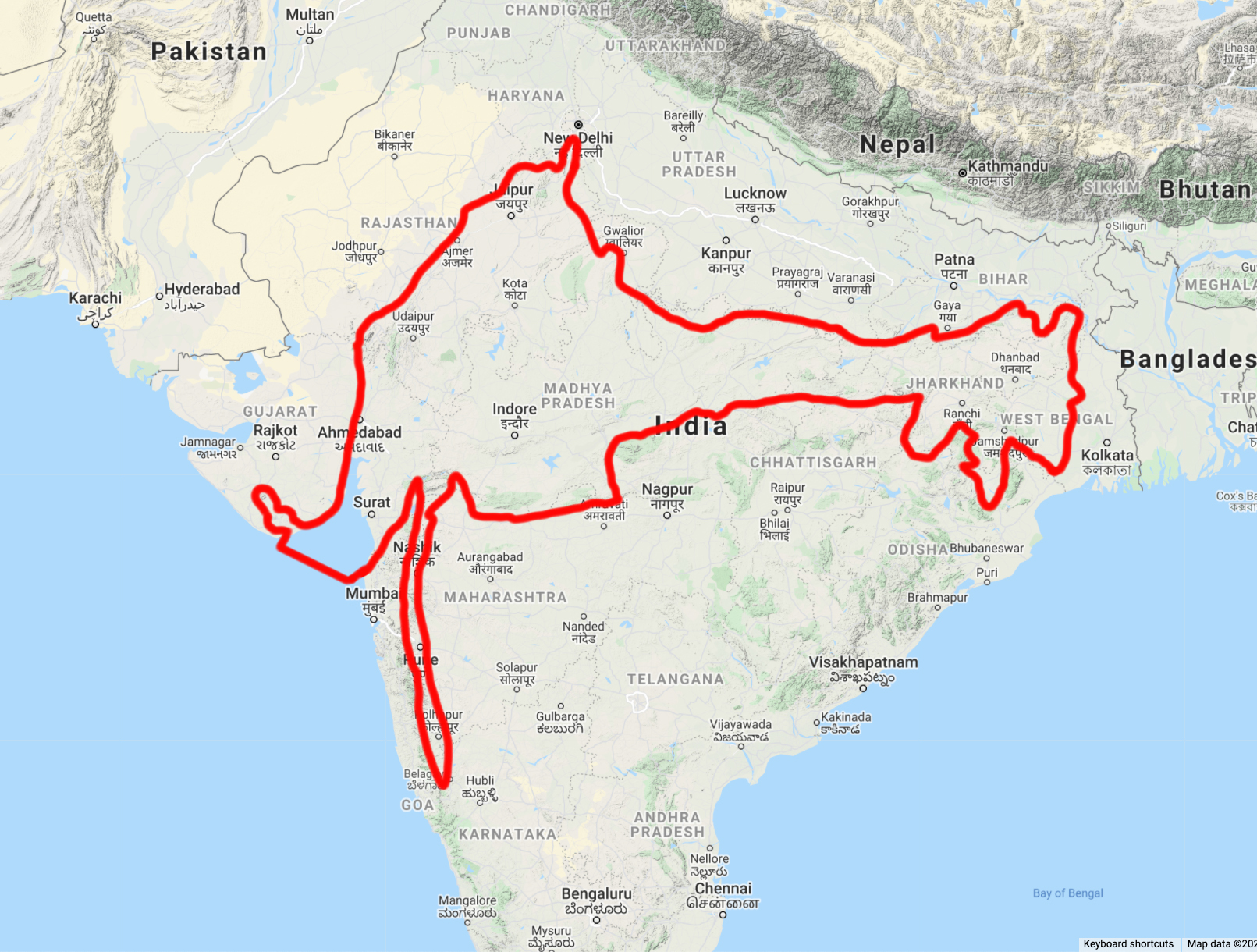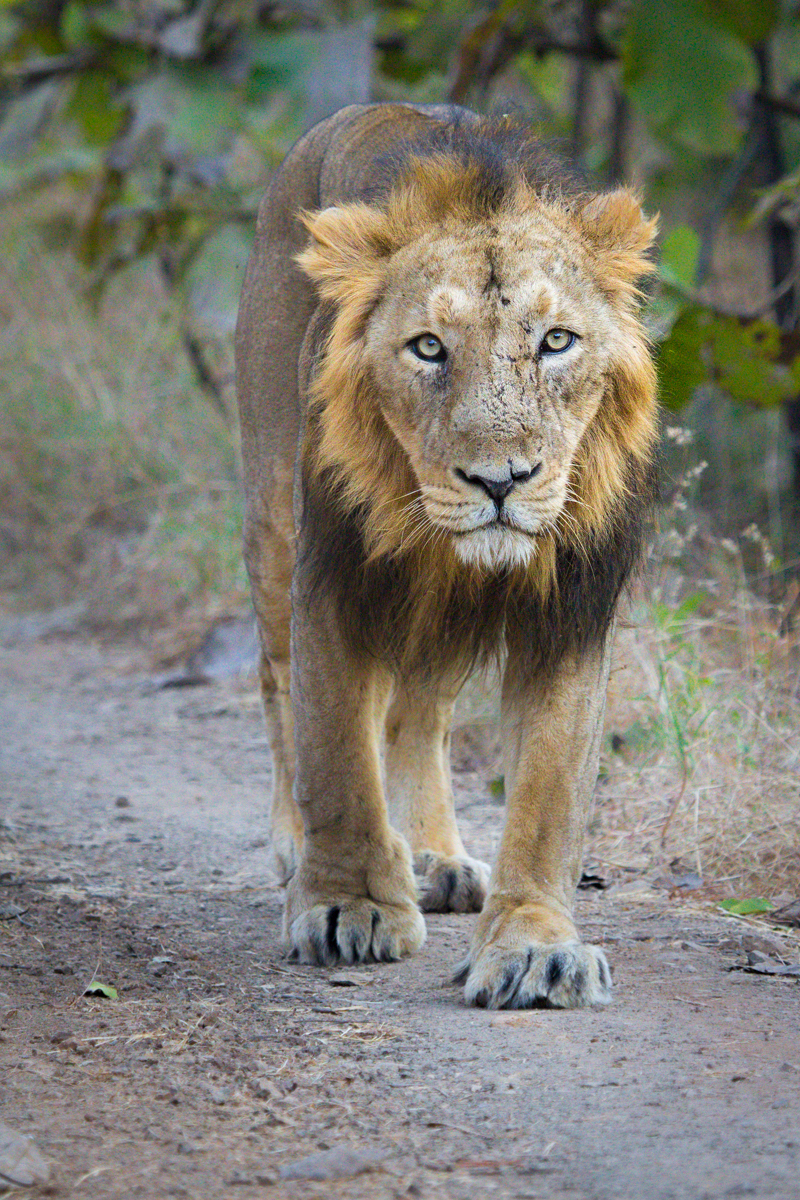Asiatic lions: coming back from the brink of extinction
One Earth’s “Species of the Week” series highlights an iconic species that represents the unique biogeography of each of the 185 bioregions of the Earth.
Asiatic lions (Panthera leo persica) are among the most charismatic of large cats along with their close relatives, the African lions. They roam large ranges of grasslands and deciduous forests, preferring shady riverine habitats in a climate that is hot and arid for most of the season.
Sadly, its population considerably shrank throughout the nineteenth century due to intensive hunting by British colonial officers and Indian rulers, at the end of the 19th century only a dozen Asiatic lions were left in India. The surviving Asiatic lions could only be found in the Gir Forest, which was once private hunting grounds and now converted into a forest, national park, and wildlife sanctuary. Asiatic lions are officially listed as endangered on the IUCN Red List and their population is now up to 523 per the last census carried out in 2015.

The Asiatic lion is the iconic species of the Indian Dry Deciduous Forests bioregion (IM3).
Beautiful camouflage
The male Asiatic lion from the Gir Forest has an average head-to-tail length of 2.82m (9 ft 3 in) and weighs about 160 kg (353 lb). Females are smaller in overall size and weigh about 120 kg (250 lb).
Male lions have the characteristic furry mane, though it is sparser than that of the African cousin, so their ears are always visible. Other distinctions among Asiatic lions are the bigger tail tuft and the prominent fold of skin along the central line of the abdomen. While the color of the fur and mane varies among regions, the tonality tends to blend in with the golden hues of the grassy scrublands.
%20(1).jpeg)
Asiatic lion family in Gir National Park in the Gujrat state of India.
Hunting Together
Lions in Gir National Park have a preference for hunting chital (Axis axis), sambar deer (Rusa unicolor), nilgai (Boselaphus tragocamelus), domestic water buffalo (Bubalus bubalis), cattle, and less frequently for wild boar (Sus scrofa). Over the past decade, there has been very few livestock kills within the sanctuary because of changes in prey community distribution.
Male Asiatic lions tend to roam, rest, hunt and feed with a loose group or pride of up to three, while female prides comprise up to twelve individuals, both adults and cubs. When they hunt, they share the carcasses with each other, and only very seldom do they do so with males.
.png)
Asiatic lion in a national park in India. Image credit: Dopeyden, Creative Commons
Territorial by Nature
While home ranges for males can be as vast as 230 km2 (89 mi2), those of females are up to 85 km2 (33 mi2). Males form a coalition of three to four individuals who hold and defend territories that contain one or two female prides. When males chose to coexist in a coalition, one will tend to dominate among the others, and all of them are constantly demarcating the territory within the rangeland. During mating season (October and November), males and females tend to associate for a couple of days but do not feed or live together at that time nor during the rest of the year.

Protected Rangelands Protect Lions
The most recent conservation focus is the reintroduction of Asiatic lions to the Kuno Wildlife Sanctuary in Madhya Pradesh. In the early 1990s, an ecological assessment of protected areas within the historical range of lions was undertaken by the Wildlife Institute of India which identified Kuno Wildlife Sanctuary as having the most potential as a reintroduction site. This is a crucial move as Asiatic lion numbers have increased to a point where about 50 percent of the country’s lion population currently lives outside a protected area.
The steady rise in populations of Asiatic lions shows that protecting historical rangelands of endangered animals can result in extraordinary conservation results.
Explore The Bioregions.png?auto=compress%2Cformat&w=1440)

